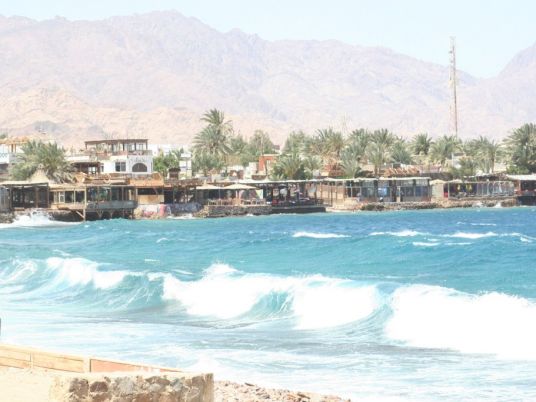The protection of the environment is usually considered one of the least important concerns for traditional mass tourism. But "eco-tourism" gives an eco-responsible answer to the increase of tourists flow while preserving the natural and historical heritage of a country. Egypt, with its population of over 80 million crammed on a mere 5 percent of the territory, has great potential for eco-tourism.
The destinations for eco-tourism in Egypt are concentrated mainly in the three deserts: the Eastern desert, which is defined by an incredible mixture of biodiversity, the protected area of Western desert, and the Sinai desert.
One of the main attractions in these areas is represented by the Oases, among which the most famous are the Fayoum, Siwa, and Bahariya oases, the last of which is a depression located about 360 km west of Cairo and close to the Black and White deserts. In the Dakhla oasis, tourists can find Neolithic rock paintings and the Farafra and Kharga Oases.
Currently, Egypt contains 28 protected areas. According to Mahmoud al-Kalsouny, environmental advisor to the tourism minister, that number will have grown to 44 by the end of 2017 and encompass 24 percent of the Egyptian land.
“Thanks to eco-tourism we can use around 94 percent of Egyptian land, while before we could only use 15 percent of it,” Kalsouny pointed out.
Since 2002, the year when eco-tourism was internationally promoted by the UN, Egypt has made a lot of effort in order to make use of its three deserts, which are filled with a rich biodiversity and history.
The travel and tourism competitiveness 2011 report, published by the World Economic forum in early 2011 before the beginning of the political unrest, suggests that a number of long-term issues should be addressed in order to boost eco-tourism in Egypt. Tourism and transport infrastructures should improve, while the extraordinary cultural heritage the country is endowed with should be increasingly praised with its seven World Heritage cultural sites, and the low-cost hotels and fuel prices that make Egypt a perfect destination for the new generation of eco-tourists.
As the Ministry of Tourism reports revealed, the last international financial crisis did not have a strong impact on Egyptian tourism, which still attracted 12 million tourists in 2009.
“Eco-tourism was growing incredibly before the revolution broke out,” Kalsouny assured. “The January revolution had a negative effect on tourism with activities revolving around desert and sea shore, which dropped off 80 percent. Currently the peak of tourists, mainly Russians, reaches 20 percent,” Kalsouny stated, attributing “the decrease to the lack of security in such isolated areas.”
Hisham Zaazou, senior assistant to Egypt’s Minister of Tourism, explained that a direct consequence of the unrest was the temporary suspension of the “green initiative for Sharm el-Sheikh,” which aims to adapt the city on the southern tip of the Sinai Peninsula to sustainable standards by 2020. The project includes four targets, namely emission control, water supply, waste management and the protection of biodiversity.
As Zaazou told Al-Masry Al-Youm in a previous interviewlast December, the initiative was approved by the prime minister in July 2010, and was supposed to be launched in January 2011. In light of Egypt’s recent uprising, the project was postponed. However, Zaazou is confident that the Tourism and Environment ministries along with the Egypt’s South Sinai Governorate will reach an understanding about beginning the project in the coming six months.
The green star “Hotel Initiative” is the first of its kind in the Middle East to develop a national pilot for an eco-certification scheme for hotels and resorts. The certification would apply to destinations throughout the Red Sea and elsewhere. The project, which is funded by the German government, aims at transforming 40 hotels in eco-friendly structures; it has been delayed due to the unstable political situation, but it should kick off soon, as Zaazou told Al-Masry Al-Youm.
According to the environmental advisor to the tourism minister, 2010 registered 3 million divers. The eco-tourists who choose to go to the desert, either for safari trips or visits, reached about 100,000.
As Kalsouny emphasized, the season for desert trips usually takes place from September to March. Therefore, it was seriously affected by the January revolution.
If the current political uncertainty and the lack of security are seen as a deterrent to tourists, long term issues should also be overcome in order to improve eco-tourism in Egypt. Most sites lack visiting centers and facilities, and, as Kalsouny stated, are not equipped for eco-tourism. Only four are well-served: the National valley of whales (Wadi al-Hitan) in Fayoum, Saint Catherine, and the Eastern and the White deserts.
In addition, Kalsouny laments scarce cooperation between the ministry of tourism and the ministry of environment. “Following a law introduced in 1994, a special environmental board has been established, which includes all the members of the Egyptian ministries except the ministry of tourism. The latter is the most active and important in protecting environment as well as a main source of income. Nobody knows the reason,” Kalsouny stated.
In contrast with Kalsouny, Zaazou and Moustafa Foda, currently advisor of the Egyptian Environment Affairs Agency, believe a collaborative relationship between the two ministries is starting to emerge.
All the specialists interviewed underlined the importance of education and awareness campaigns in sensitizing foreign tourists as well as local residents to the environment. They stressed the importance of implementing measures such as explanatory signs for tourists and sanctions against fishermen using illegal practices with disastrous consequences on the environment.



